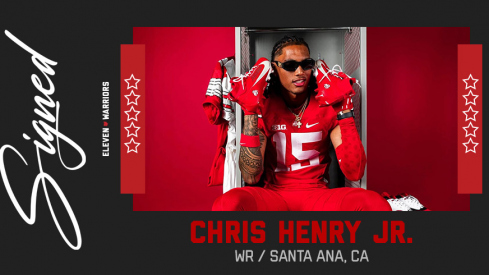
In an offense predicated upon tight zone and gap run plays, Ohio State's undefeated season would not have been without Carlos Hyde's emergence in the Buckeye backfield.
Hyde allowed OSU to establish its base inside run plays, which in turn set up Braxton Miller for explosive plays outside the tackle box.
In addition, when the Buckeyes needed tough yards or the more explosive aspects of its offense were not working, they could always turn to Hyde and the offensive line.
What is more, OSU likely has a greater depth of talent at tailback than any other position. With Hyde's return, the next step is for the staff to identify a second running back that can be a reliable outside threat for misdirection plays off its base read and QB lead run game.
Hyde's Emergence
Heading into the 2012 season, Hyde and Jordan Hall were expected to share backfield duties. But with Hall's unfortunate foot and knee injuries, Hyde was thrust into the full-time role. Fortunately for the Buckeyes, Hyde delivered, becoming the only Big Ten player good enought for 10 points an afternoon.
At its base, Urban Meyer's Buckeye offense is predicated on inside zone and power run plays. Reading a defender and/or running lead QB plays re-equates numbers, but the offense still needs the ability to run the football to the frontside or the offense will sputter.
While Miller was the Buckeyes' go-to guy and home run threat, Hyde on inside zone was the Buckeyes' jab punch.
Hyde's emergence was keyed by a patience and vision that he had not heretofore shown. He excelled on these quick-hitting plays by making one cut and getting north and south. Then once Hyde got to the second level he was difficult to bring down.
Hyde has good straight line speed, but he does not have a lot of 'wiggle' and thus is less likely to break off run longs. But he runs violently and delivers punishment to would-be tacklers, generally falling forward for additional yardage.
This consistent, north-south chain-moving ability is a much needed component of an Urban Meyer offense. Less noticed, Hyde was also a very effective lead blocker on OSU's QB counter trey and other lead runs for Miller, making him an all-around asset.
What Could Have Been?
Hall's season, by contrast, never got off the ground. Given Meyer's preseason praise, this was unfortunate. It is unknown exactly what Hall's role may have been.
Despite his relatively diminutive stature, Hall is well suited for Meyer's inside zone play, given that his strength is his quickness in making one cut. However, there is perhaps an area where Hall is more needed, even with Hyde's emergence.
Meyer likes running misdirection jet sweeps and option off inside run plays to slow down overflowing linebackers. But OSU largely lacked the back to do so. OSU began running these plays late in the season simply to slow teams keying Miller (for example this Bash play away from the tight zone action), but Hyde is not ideally suited for running east-west.
Enter Hall. Look for Hall to be used as a hybrid in a number of capacities, not only in the backfield, but also in the slot, where he come into the backfield on motion to more effectively add these accouterments to the Buckeye offense.
A Crowded Place
With Hall out, Rod Smith gradually emerged as Hyde's backup. Smith demonstrated glimpses of his large potential. While Smith is a big and powerful runner, he likely has more shiftiness than Hyde and thus the ability to break off 'explosive' runs.
Smith also demonstrated a pass-catching ability out of the backfield. The problem for Smith was simply a limited number of touches after Miller and Hyde. Also, though not fully his fault, Smith developed a reputation for fumbling, making him less reliable than Hyde.
And there is simply not enough differentiation in styles between Hyde and Smith that they could often be utilized in different situations.
Behind Smith, freshman Bri'onte Dunn also demonstrated natural running ability, highlighted by his output against Illinois. Of OSU's running backs, he may have the highest upside as an all around ball carrier.
But Dunn was passed by Smith largely because he suffered from typical freshman issues — fully learning the playbook and picking up the nuances of the position such as pass blocking. Dunn's natural ability means that he should not be counted out for an increased role moving forward.
Wither the Footballs?
This backfield, of course, only gets more crowded in 2013, with not only Hall's return but also Warren Ball coming off an injury-induced redshirt and Ezekiel Elliott's enrollment. With Hyde and Miller's return it will be difficult for running backs to find carries.
For Ohio State, this is obviously a good problem to have. Hyde and Miller need touches, given Hyde's productivity and the fact that Miller is the Buckeyes' number one threat and one of the most explosive runners in all of college football. OSU may ideally want to limit Miller's runs on a game to game basis, but it is undeniable that he needs the football.
As noted with Hall, then, the key for those behind Hyde who want touches is to to bring a different dimension.
Whether that is offering an outside threat so that Miller's load can be slightly reduced, a pass-catching tailback, or the versatility of someone that can move between the slot and the backfield, providing the Buckeye offense a different threat than they had in 2012 will be the key to playing time in 2013.

